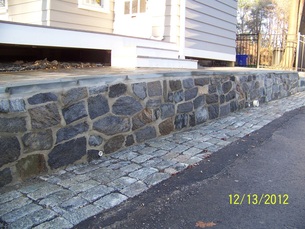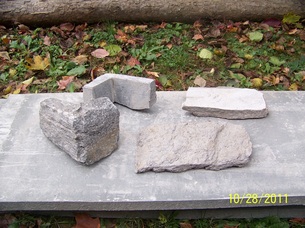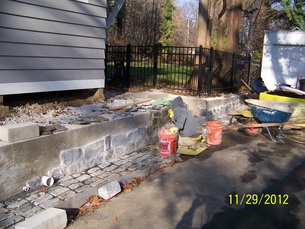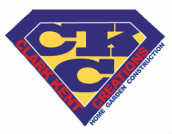To me, there is nothing like the look and feel of real natural stone -- the appearance, the look, the feel, the texture, heck, even the sound. It just adds a feel that the project has been there for a long time and will continue to be there for a long time. It is truly part of the landscape.
And while there a number of faux or manmade imitation stone products out there, with varying degrees of quality in my opinion, nothing compares to the real deal. And in an area like Philadelphia where so many old structures were built with native stone, the faux stone can also stand out rather unfavorably compared to all the authentic stonework dotting the landscapes. But unfortunately natural stone can jack up the project costs pretty quickly, both in terms of material cost and labor. And if you're working on a budget (who isn't in these times!?), having a natural stone wall built can be costly.
The process is quite simple really. For most of my applications, I'm applying the veneer to vertical surfaces of a newly poured concrete foundation. Veneer can be applied to existing masonry surfaces as well, as long as the surface is clean, intact, and the application of an additional 1" to 2" of thickness won't interfere with any other objects on the surface such as door jams or windows. Stone veneer can also be applied on top of existing wood or metal surfaces, however a few additional steps are necessary which I won't get into in this discussion.
Once the concrete foundation has been poured, the forms removed, and the surface has had ample time to cure, the veneer process can be begin.
We typically use Quarry Cut brand veneers, available in a wide range of styles and sizes. The pieces measure about 1.5" thick, flat on one side and natural texture on the face. They come in flats and corners to avoid any conspicuous joints at the corners of the wall or structure.

Start veneering at the bottom of the vertical surface, gradually working your way up. As you begin setting stones on the second and third courses, the upper stones will rest upon the lower ones which have already been set.
Stone veneer can be set to mimic a dryset look, with no pointing and minimal joint spacing, or a wetset look with mortar joints between the stones. If the veneer stones are being pointed, use special care to sponge-clean the excess mortar off the surface of the stones as they're being set without adding too much water or pressure to the freshly set stones.
Depending on the look of the stonework, veneer stones are available as narrow ledgestones, larger squares and strips, or irregular pieces.
For more information regarding natural stone veneer, or to see some additional samples of our work, please feel free to contact us. We love to show off our work!






 RSS Feed
RSS Feed